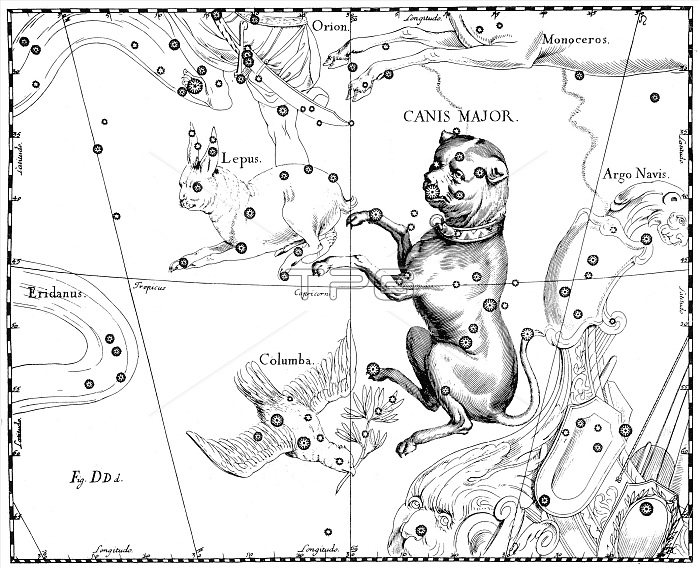
Canis major constellation from Johannes Hevelius' Prodromus astronomiae, Firmamentum Sobiescianum, sive Uranographia, 1687. Canis Major was one of the 48 constellations described by the 2nd century astronomer Ptolemy and is now one of the 88 modern constellations defined by the International Astronomical Union. Its name is Latin for greater dog, and is commonly represented as one of the dogs following Orion the hunter. Canis Major contains Sirius, the brightest star in the night sky, known as the "dog star". Canis Major is a constellation in the southern hemisphere's summer (or northern hemisphere's winter) sky, bordered by Monoceros to the north, Puppis to the east and southeast, Columba to the southwest, and Lepus to the west. The Hevelius Firmamentum was the first star atlas to rival Bayer's Uranometria in accuracy, utility, innovation, and influence. The star positions for the charts were derived from his own star catalog, based on his own observations, which was first published along with the atlas. It is unique among the Grand Atlases in choosing to depict the constellations as they would appear on a globe, that is, from the outside looking in, rather than from a geocentric point of view, as Bayer and most others adopted.
| px | px | dpi | = | cm | x | cm | = | MB |
Details
Creative#:
TOP22163904
Source:
達志影像
Authorization Type:
RM
Release Information:
須由TPG 完整授權
Model Release:
N/A
Property Release:
No
Right to Privacy:
No
Same folder images:

 Loading
Loading